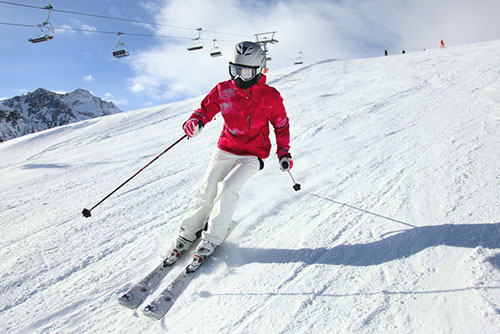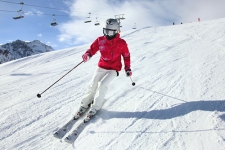
As fun as winter sports are, they can be extremely dangerous and lead to unwanted injuries. In fact, according to the US Consumer Product Safety Commission, nearly 200,000 individuals were treated for winter-related sports injuries in 2018 – 76,000 injuries from snow skiing, 53,000 injuries from snowboarding, 48,000 injuries from ice skating, and 22,000 injuries from sledding.
Common Winter Sports Injuries
These injuries range from head to toe. Here are some of the most common ones:
- Head and Neck Injuries – Concussions and whiplash are often a result of a hard fall while playing winter sports. Over 23,000 concussions are caused by winter sports every year. Most head injuries occur when skiing or snowboarding, and in fact, it’s the leading cause of death and disability among these two sports. It’s extremely important to know the signs of a concussion, which are blurred vision, dizziness, confusion, and vomiting. As for whiplash, this is when the head violently moves backward and forward. This quick movement extends the head and neck muscles past their normal range in motion, which causes neck pain and stiffness. With this injury, the pain might not be immediate but can take days or weeks before it worsens.
- Spinal Injuries – A spinal injury can disrupt your life quite quickly, and it could keep you off your feet for weeks. A lot of skiers and snowboarders run the risk of spinal injuries, like sprains and strains, when jumping or trying a more advanced slope. It’s important to stick to your skill level before advancing to the next to prevent injuries.
- Shoulder Injuries – A dislocated shoulder can happen when taking a fall and hitting a hard surface with your shoulder. The shoulder is a very mobile joint, which makes it easier to pop out of place compared to other joints. If this happens, it is crucial to not put off a doctor’s visit for too long as this could lead to a frozen or immobile shoulder.
- Hand Injuries – Once again, a fall is the most common cause of hand injuries while playing winter sports. Skier’s thumb happens when falling with your hand in the ski pole strap, which can cause a ligament tear. The skier’s thumb is the second most common injury for skiers.
- Knee Injuries – As for the most common winter sports injury, that would be knee injuries. Skiers are particularly prone to knee injuries as they do a lot of twists and turns while navigating the slopes. The most recurrent knee injuries are ACL and PCL injuries. These are injuries to the ligament that stabilizes the knee, and it happens with a sudden twist while the feet are planted. Some other injuries are a torn meniscus, fractured kneecap, and knee dislocation.
- Ankle Injuries – Ankle injuries are very frequent in the US – especially in icy and snowy conditions. For snowboarders, they use a lot of ankle movements to control their board, so they frequently fracture the bone above the heel called the Talus bone. A fracture like this could keep you in a cast for weeks; whereas, a mild sprain could be treated with the RICE method rather quickly.
Winter Sports Safety Tips
When heading out this winter it’s essential that you take the proper steps to prevent these injuries and also know how to respond to them if they do occur. Before hitting the slopes you should…
- Be well-conditioned beforehand
- Get warmed-up before you begin participating
- Wear appropriate protective gear
- Drink plenty of water
- Rest when you’re in pain or exhausted
- Learn how to fall
Closing Thoughts
We don’t ever want to see any of our patients get injured, but unfortunately, it does sometimes happen. If you find yourself suffering from an injury or pain, please don’t hesitate to give us a call. Prairie Orthopaedic & Plastic Surgery, PC in Lincoln, NE is here to help you get back on your feet. Please contact us at 402-489-4700!

